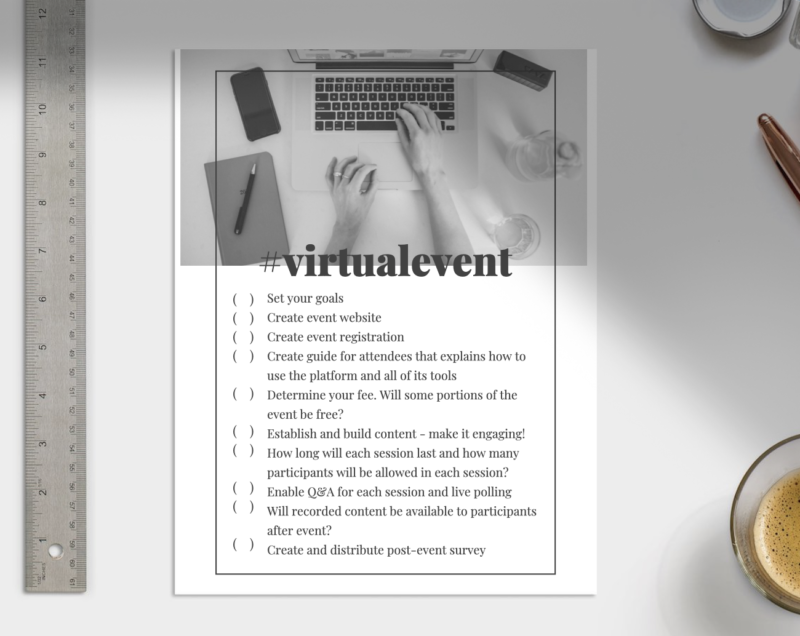According to Forbes.com, virtual events are up a whopping 1,000% since the onset of Coronavirus. As of May 2020, the popular virtual event platform 6Connex had hosted more than 52,000 events and sub-events.
Not surprisingly, more companies are choosing a virtual platform for conferences and meetings as Covid-19 continues to take its toll.
Moving to a virtual platform is not necessarily something to bemoan. There are many benefits to going online – here are just a few:
- Safety: This goes without saying. In-person events, especially involving large crowds, are not a good idea during a pandemic (you don’t want the lasting takeaway from your event to be that dozens of people got sick.)
- Accessibility: Virtual events allow you to accommodate attendees who are unable to attend in person either because they cannot physically travel to the meeting site or because they cannot afford the cost.
- Budget: According to Aventri, the overall cost of a virtual event is 75 percent less than an in-person event. “Event planners will save on staff, venue, setup and takedown, attendee’s hotels, meals, travel costs, and so much more,” the company states.
But how do you ensure the success of a virtual event, especially if you’ve never planned one before?
In short, you prepare much the same way you would for a traditional face-to-face event.
To pull off a fantastic virtual event, you need to:
- Plan the event with the same care and attention you would an in-person event. It may even be necessary to hire an event planner.
- Promote the event
- Engage your attendees
- Provide value
- Prove ROI
Just as your choice of venue is critical to the success of your event, so is your choice of software or platform to host your virtual event. Of course, test-driving a virtual platform isn’t as fun as a traditional site visit, but you can think of them as one in the same.
The virtual event software you choose will determine the capacity and length of your event. Some video conferencing platforms, especially “free” versions, limit the number of participants that can attend at one time as well as the length of each session. Paid platforms typically offer larger participant capacity, longer time limits, better customer service and on-demand technical support.
Other considerations – is the platform intuitive, easy to navigate, and does it provide adequate tools for attendees to connect with one another?
Networking is just as important to participants in an online format as it is in person. Make sure to schedule time throughout the event for connecting.
Set Your Attendees Up for Success!
Although you are going to do your due diligence in choosing an intuitive platform, anytime technology is involved, technical errors are inevitable. Some issues may arise on the part of the platform and some may be due to user error.
The participant guide mentioned in the checklist below will be crucial to educate attendees prior to the virtual event. Your attendees won’t glean much value from the event if they are frustrated with the technology – better to manage expectations up front!
The following elements are critical to the success of your virtual event. Download this checklist to use as a guide.
- Set your goals
- Create event website
- Create event registration
- Create guide for attendees that explains how to join keynotes, attend sessions, and use messaging tools
- Determine your fee. Will some portions of the event be free?
- Establish and build content
- How long will each session last and how many participants will be allowed in each session?
- Enable Q&A for each session and live polling
- Will recorded content be available to participants after event?
- Create and distribute post-event survey
How do you know if the event was a success?
There is a variety of data that can be collected at a virtual event (and it’s generally easier to collect than at an in-person event!)
Important data to gather during the event:
- # of Registrations
- Demographic Attendee Information
- Session Registration
- Email Open and Click-through Rates
- Post-Event Survey Results
- # of Leads
- Buying Interest
- Session Ratings
- Session Feedback
- Social Media Engagement and Reach
Cross reference the data points above with your original set of goals to measure your overall success.
